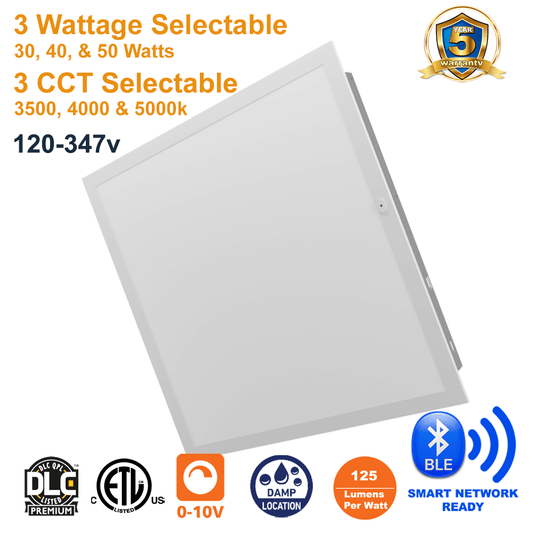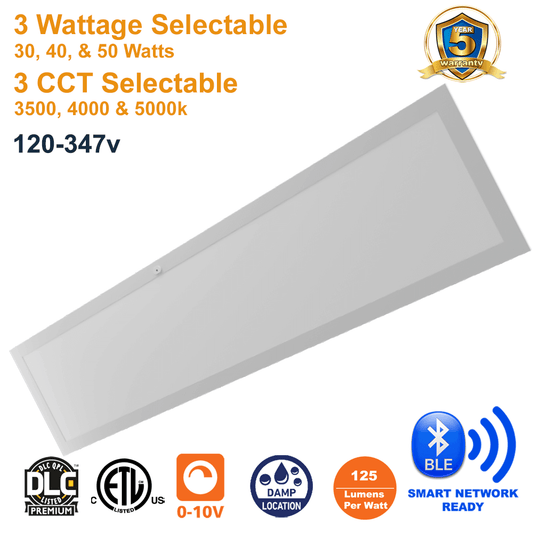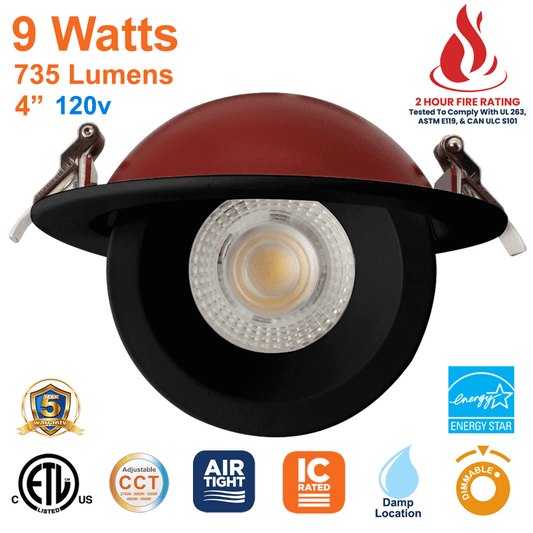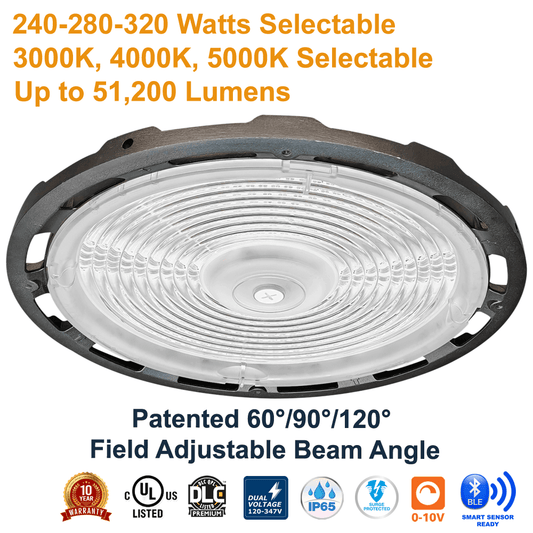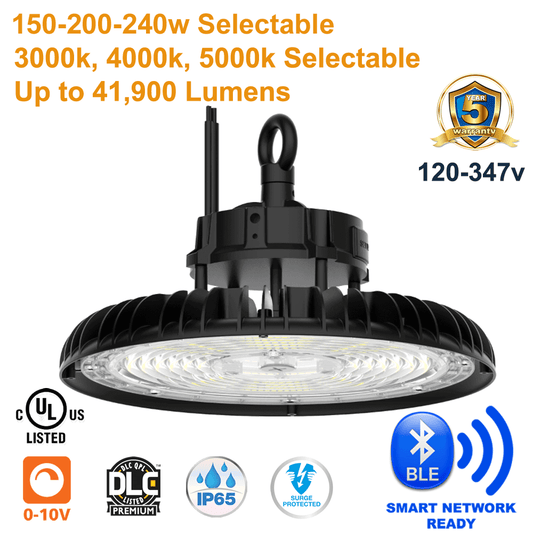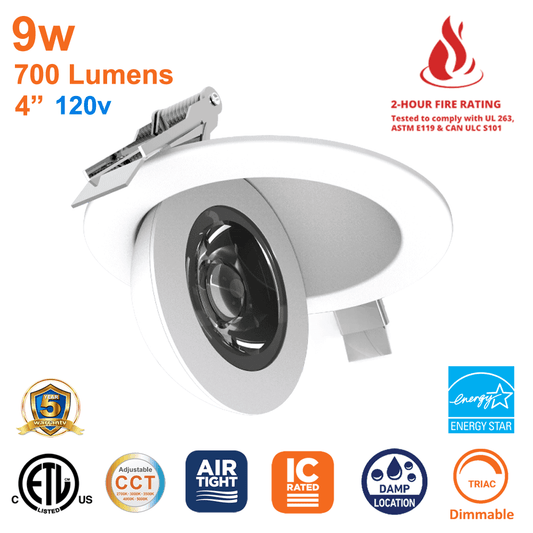This guide explores how Canadian building regulations shape the safe use of fire-rated recessed lighting—especially pot lights—in homes and commercial buildings. You’ll learn the difference between fire-rated and IC-rated lighting, why proper fire containment in ceilings is a legal requirement, and how CSA, UL, and ULC certifications come into play. We’ll unpack installation standards based on the National Building Code of Canada (NBCC) and Canadian Electrical Code (CEC) and give you practical tips for choosing compliant lighting options.
If you’re an electrician, architect, contractor, or homeowner working on new builds or renovations, this guide offers clarity on the technical and regulatory landscape of recessed lighting.
Lighting the Way to Fire Safety in Canada
In modern construction, aesthetic lighting choices must now balance form and fire safety. And in Canada, that balance isn’t just best practice—it’s mandated. Recessed lights, also known as pot lights, create necessary openings in ceilings and walls. But those same openings can become dangerous fire escape routes unless sealed and tested properly. That’s where fire-rated recessed lighting steps in.
Fire-rated downlights are fixtures designed to restore the fire resistance rating of a ceiling or wall compromised by their installation. They're often built with intumescent pads and fire-resistant housing to block heat, flames, and smoke. For anyone working under the guidelines of NBCC, understanding how these fixtures are evaluated and installed is essential.
“A fire-rated fixture isn’t just about performance—it’s about protection, compliance, and peace of mind.”
National Standards That Define Compliance
Key Building Codes
Canadian lighting projects are primarily governed by two critical documents:
-
National Building Code of Canada (NBCC): Outlines fire safety design, including the concept of fire separation rating, and mandates the use of fire-rated assemblies for many applications.
-
Canadian Electrical Code (CEC): Enforced by provincial authorities, this defines wiring, connection methods, and fixture safety through rules like CEC Rule 30-500, relevant to recessed luminaires.
Together, these codes emphasize:
-
Ceiling integrity
-
Insulation contact safety (IC Rating)
-
Smoke control and fire containment
These aren’t optional checkboxes—they’re the foundation for passing inspections by AHJ (Authority Having Jurisdiction).
For example, this 6-inch Fire Rated Pot Light is both IC-rated and certified for a 2-hour fire resistance period under UL 263, making it an ideal choice for code-compliant installations.
Understanding Fire Ratings in Recessed Lighting
What Does "Fire Rated" Really Mean?
Fire-rated recessed lighting isn’t about being fireproof—it’s about containment. When a fixture is rated for 30, 60, or 90 minutes, it means it has been tested (e.g., under ASTM E119 or UL 263) to maintain ceiling integrity for that time.
These tests evaluate:
-
Structural integrity under heat
-
Thermal protection performance
-
Smoke-proof seals using intumescent materials
Fixtures with a 2-hour fire rating are often required in multi-family dwellings, fire separation assemblies, and emergency egress routes. The key is using certified products and pairing them with proper installation practices.
For example, this 4-inch 2-Hour Fire Rated Pot Light has been cETL certified, making it suitable for Canadian code requirements in both residential and commercial projects.
Fire-Rated vs IC-Rated: What’s the Difference?
Many builders mistakenly believe IC-rated (Insulation Contact) fixtures also satisfy fire-rated requirements. They don’t. Here’s how they differ:
| Rating Type | Purpose | Typical Use Case |
|---|---|---|
| IC Rated | Allows direct insulation contact without overheating | Energy-efficient ceilings |
| Fire Rated | Maintains fire barrier in penetrated ceilings/walls | Fire separation, legal compliance |
You’ll often need both. Fortunately, many modern recessed lights now carry dual ratings, making them versatile and safer for Canadian environments.
Certifications: More Than a Label
In Canada, compliance labels aren’t just suggestions—they're required for inspections and liability protection. Key certifications include:
-
CSA Certification (Canadian Standards Association)
-
ULC Certification (Underwriters Laboratories of Canada)
-
cETLus and UL 263 for fire testing compliance
-
CAN/ULC-S101 for building assemblies
-
CAN/CSA-C22.2 for electrical fixtures
When choosing a product, always verify that a Schedule of Certification or Field Label accompanies it—especially for custom or retrofit fixtures.
Take a look at the 3-inch UL263-rated pot light from our lineup—it’s specifically designed for tight spaces like bulkheads and overhangs while meeting 2-hour fire barrier requirements.
Engineering Fire Safety: Installation Practices That Matter
Protecting the Fire Barrier During Installation
One of the most critical (and commonly overlooked) aspects of fire-rated recessed lighting is how it’s installed. Even the most certified product becomes non-compliant if improperly fitted.
The NBCC mandates that penetrations—like holes cut for lighting—must not compromise the fire separation rating of the ceiling or wall. That means both the light fixture and the installation method must work together to restore the original fire resistance of the assembly.
Key practices include:
-
Laser-guided cut-outs to ensure minimal gap and precision placement
-
Use of intumescent pads around cut-outs if not built into the fixture
-
Sealing all joints with certified penetration seal systems
When retrofitting older homes, the stakes are higher. You may be dealing with:
-
Uninsulated ceilings
-
Non-rated drywall
-
A lack of vapour barrier integration
This is where choosing a well-designed, airtight and vapour barrier-safe fixture becomes critical.
If you're planning a ceiling retrofit, consider browsing our full collection of fire-rated pot lights for options compatible with Canadian code and designed to simplify upgrades.
Sealing the Ceiling: Vapour Barriers, Airtight Construction, and IC Ratings
In Canada’s cold climate zones, building codes don’t just focus on fire—they also regulate energy efficiency and moisture protection. This is where IC rating, airtight construction, and vapour barrier safe installation intersect.
What Makes a Fixture IC-Rated?
An IC-Rated (Insulation Contact) fixture can be installed in direct contact with thermal insulation—no buffer required. But it must also:
-
Prevent heat buildup (to avoid fire)
-
Maintain electrical safety
-
Avoid air leaks, which can affect the thermal envelope performance
Many older fixtures do not meet these criteria, making them risky or outright non-compliant.
Some newer models, however, combine IC-Rated safety, fire-resistant materials, and 5CCT lighting technology—making them perfect for modern homes.
One standout example is our Energy-Star-certified 5CCT pot light, which is airtight, wet-rated, and cETL certified, making it ideal for areas like bathrooms, basements, and attic spaces.
"An airtight fixture does more than protect from fire—it seals the envelope, cuts energy loss, and prevents moisture infiltration."
Field Approval, Labeling & AHJ Expectations
Let’s address a topic that trips up even seasoned installers: documentation.
In Canada, fire-rated recessed lighting must be labeled correctly and often approved on-site by the AHJ (Authority Having Jurisdiction). Failing to meet these expectations can result in costly project delays.
Here’s what the AHJ expects:
-
Fire rating label or embossed stamping on fixture housing
-
Proof of testing—like ASTM E119 or UL 263 rating
-
Clear indication of IC rating, wet/damp location approval, and dimming compatibility
-
A Schedule of Certification, showing the product is approved for Canadian use
Don’t expect approval based on assumption. Even a well-performing product must show its fire rating, IC-AT compliance, or CSA/ULC certification on-site.
When shopping for code-compliant lighting, always ensure you're choosing a product that comes pre-labeled with this information. We make it easier at LED Network by ensuring all our fixtures meet or exceed Canadian documentation standards.
Fire Separation Assemblies and Canadian Retrofit Realities
What is a Fire Separation Rating?
Defined under the NBCC, a fire separation rating refers to the minimum time duration (in minutes or hours) that a building component—like a wall or ceiling—must resist the spread of fire.
When a recessed light is installed, you are interrupting that fire-rated assembly. If you don’t replace its fire resistance with a certified fixture or ULC-tested fire collar, you’re likely violating code.
In retrofits, this challenge intensifies:
-
Existing drywall may be non-rated
-
Ceiling joists may lack firestop blocks
-
Fire-resistant glass or trims may not have been used
To bring a retrofit project up to modern code, look for products tested to CAN/ULC-S101 or UL 263, and that are designed for fire-rated ceilings.
You may also want to ensure double-layer drywall compatibility, particularly in multi-unit residential or mixed-use buildings, where strict fire separation rules apply.
Real-World Use Cases: From Condo Corridors to Basement Suites
Fire-rated recessed lighting is often mandatory, not optional, in areas like:
-
Shared corridors in condos or apartments
-
Stairwells and emergency egress routes
-
Garage ceilings below habitable spaces
-
Secondary basement suites (where code-compliance is crucial)
In each of these, you need fixtures that are:
-
IC-rated and airtight
-
Rated for 2-hour fire containment
-
Compatible with vapour barriers
-
Installed per CEC and NBCC fire separation standards
Fixtures like our 6-inch 1100-lumen fire-rated pot light offer high lumen output for wide coverage and are ideal in commercial hallways or tall ceilings that demand maximum light spread and safety assurance.
Choosing the Right Fire-Rated Recessed Fixture: What to Compare
Not all fire-rated recessed lighting is created equal. Whether you’re outfitting a new build or retrofitting an older structure, understanding the specs behind your pot lights is key to compliance—and performance.
Here are the most critical specs to compare:
1. Fire Resistance Rating
Look for certified durations like:
-
30 minutes (basic residential separation)
-
60 minutes (most common for suites and corridors)
-
90–120 minutes (multi-unit or commercial use)
Always ensure the rating matches or exceeds the fire separation rating required by your local jurisdiction.
2. Certification & Testing
The gold standard for Canadian installations includes:
-
UL 263, ASTM E119, or CAN/ULC-S101
-
CSA certification or ULC mark
-
ETL, cETLus, or Field Evaluation Label (if AHJ requires it)
Look for spec sheets that clearly outline these, such as those provided with our Fire Rated 3-Inch Pot Light, which offers UL263 testing, dimming compatibility, and a wet-rated seal.
3. Lumen Output & Wattage
Balance brightness with efficiency:
| Room Type | Suggested Lumens (per fixture) |
|---|---|
| Bedrooms | 600–800 lumens |
| Kitchens | 800–1000 lumens |
| Hallways | 400–700 lumens |
| Commercial/High Ceilings | 1000–1200 lumens |
The 4-inch 800 lumen model is ideal for average-sized living spaces, offering enough punch without overpowering the room.
4. Trim Design and Profile
The design should match the aesthetic and ceiling type:
-
Low-profile fixtures are best for shallow ceiling spaces.
-
Adjustable trims can direct light where needed.
-
Insulation-safe trims with airtight construction help meet energy efficiency targets under CEC and NBCC guidelines.
The Contractor’s Compliance Checklist
For professionals and DIYers alike, this checklist is a reliable step-by-step tool to ensure fire-rated lighting is up to Canadian code:
Before Installation
-
Confirm fire separation rating of the ceiling or wall
-
Identify if IC Rating is required based on insulation type
-
Select fixture with correct fire rating (30/60/90/120 min)
-
Check for CSA, ULC, or cETL certification
-
Obtain and print spec sheet for inspector
-
Verify airtightness and vapour barrier compatibility
-
Choose proper junction box if not integrated
During Installation
-
Use laser-guided cut-outs for precision
-
Install or confirm intumescent seals are present
-
Use penetration sealing systems as required
-
Ensure contact with insulation only if IC-rated
-
Avoid trimming or modifying fixture housings
After Installation
-
Label fixtures clearly with fire rating
-
Provide AHJ with Schedule of Certification
-
Confirm dimming compatibility with selected switch
-
Perform a thermal test if required by code
-
Take photos and document the install for future verification
What’s Next in Fire-Rated Lighting?
While compliance is the priority, innovation is transforming the fire-rated lighting category. Expect to see:
1. Smart Integration
Fixtures that integrate with smart home systems while maintaining fire safety ratings are starting to emerge. Demand is rising for WiFi-connected and voice-controlled lighting in multi-family and high-end custom homes.
2. Tunable White and RGB Lighting
The flexibility of 5 CCT lighting is becoming the standard, with builders preferring tunable colour temperatures to fit different zones. Our 5 CCT fixtures allow for on-site adjustments—no guesswork needed during design.
3. Higher Fire Ratings in Slimmer Designs
Expect more low-profile models capable of achieving 2-hour ratings, previously only available in bulkier fixtures. These are essential for tight ceiling voids, retrofits, and modern minimalist builds.
Final Thoughts
Canada's building regulations aren't just a legal hurdle—they're a blueprint for safer homes, smarter construction, and resilient design. As this guide has explored, fire-rated recessed lighting plays a crucial role in that system.
To stay compliant and forward-thinking:
-
Choose certified, IC-rated fixtures
-
Install with precision using code-aligned practices
-
Prepare for inspections with clear documentation
-
Consider the long-term value of tunable, efficient, and smart-compatible lights
At LED Network, we specialize in helping Canadian homeowners, builders, and designers find lighting that not only looks great but meets and exceeds fire and energy safety standards.
If you're ready to elevate your project with code-compliant, tested, and trusted recessed lighting, browse our curated selection of Fire-Rated Pot Lights to get started.
Frequently Asked Questions (FAQ)
1. Are fire-rated recessed lights required in all ceilings?
No, fire-rated recessed lights are typically required only in ceilings or walls that serve as part of a fire separation assembly—such as between residential units, in exit corridors, or in garage ceilings beneath habitable rooms. For regular single-family ceilings without fire-rated construction, IC-rated fixtures may suffice, but check your local building code for specific requirements.
2. Can I use a fire-rated fixture in a non-fire-rated ceiling?
Yes. A fire-rated fixture can be used in a non-rated ceiling. While it may be "overbuilt" for the application, it does no harm and often offers added safety, especially in situations where you may later upgrade other parts of the structure or insulation.
3. What’s the difference between cETL, CSA, and ULC certifications?
All are recognized testing agencies in Canada:
-
CSA (Canadian Standards Association) is the national standard body.
-
ULC (Underwriters Laboratories of Canada) focuses on fire and safety performance.
-
cETLus is a certification by Intertek, verifying compliance with North American standards.
Any of these may be accepted, but ULC and CSA are generally preferred for fire-rated applications under Canadian codes.
4. Do all recessed lights require a junction box?
Yes. According to CEC (Canadian Electrical Code), recessed fixtures must be properly connected to power via a listed junction box, either built into the fixture or mounted separately. This ensures safe wiring, fire isolation, and access for maintenance.
5. What is the minimum clearance required around non-IC-rated fixtures?
Typically, 3 inches (76 mm) of clearance is required between a non-IC-rated fixture and any insulation. This buffer zone helps prevent overheating. However, exact spacing must comply with manufacturer specifications and local code rules.
6. Do fire-rated lights also reduce noise transmission between units?
Yes, to a degree. Because fire-rated lights are sealed more tightly and often installed in double drywall or acoustic-rated assemblies, they can contribute to sound dampening—though they are not a substitute for dedicated acoustic treatments.
7. Are fire-rated downlights required to be dimmable?
No. Dimming is not a requirement under Canadian fire code, but it is often preferred for aesthetic and energy-efficiency reasons. Many fire-rated pot lights now come with dimmable LED drivers compatible with leading-edge dimmers, but always confirm compatibility before purchase.
8. What happens if a non-rated fixture is installed in a fire-rated ceiling?
This is a code violation. It compromises the ceiling’s fire separation rating and may cause:
-
Failed building inspections
-
Liability exposure in case of fire
-
Insurance coverage issues
Fixtures must be specifically rated and labeled to restore the fire resistance of the penetrated assembly.
9. Can I install fire-rated pot lights in exterior soffits?
Yes, if they’re rated for wet or damp locations and have the necessary fire certification. For example, some fire-rated IC-rated wet location pot lights are ideal for soffits, garages, and carports. Always check the spec sheet for IP rating and thermal enclosure safety.
10. How do I confirm if my installed fixture meets Canadian fire code?
You can confirm compliance by:
-
Checking for a permanent label showing fire rating and certification body
-
Reviewing the fixture's spec sheet or schedule of certification
-
Asking your installer for a Field Evaluation Label if the fixture is not pre-certified
-
Consulting with the Authority Having Jurisdiction (AHJ) during or before inspection
If unsure, replacing the fixture with a certified, labeled product is the safest option.





